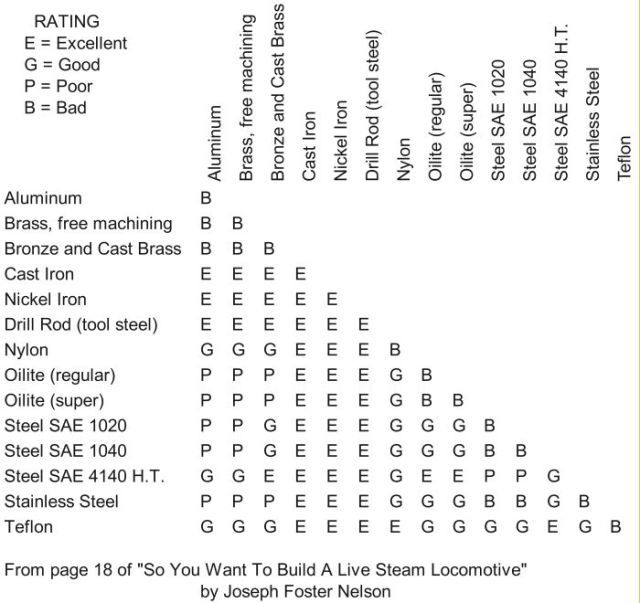Hi, All,
I have spent summer and most of the fall rebuilding my 7x14 mini-lathe, scraping the saddle, cross-slide, and compound; extending the cross-slide movement; modifying the saddle adjustment system to allow adjustment from above; implementing John Lindo's gear reduction system to increase torque; and adding a saddle lock.
Now I am ready to start on my second engine project, and I've decided I want to try the Little Husky. I would like, however, to be able to run it on steam, not just compressed air. As a result, the material selection is important. I made up a list of which material to use for which component, but ended up with a lot of expensive phosphor bronze for the cylinder, cylinder head and valve chamber, while using a brass piston. At which point I realized I don't know what I'm doing with metal selection for steam, so I decided to ask for some help here. Are there some general recommendations that the group can make on material selection of the components that come in contact with steam? Obviously, dissimilar materials where there is movement between parts, but beyond that, I'm a bit lost. Any input is appreciated...
I have spent summer and most of the fall rebuilding my 7x14 mini-lathe, scraping the saddle, cross-slide, and compound; extending the cross-slide movement; modifying the saddle adjustment system to allow adjustment from above; implementing John Lindo's gear reduction system to increase torque; and adding a saddle lock.
Now I am ready to start on my second engine project, and I've decided I want to try the Little Husky. I would like, however, to be able to run it on steam, not just compressed air. As a result, the material selection is important. I made up a list of which material to use for which component, but ended up with a lot of expensive phosphor bronze for the cylinder, cylinder head and valve chamber, while using a brass piston. At which point I realized I don't know what I'm doing with metal selection for steam, so I decided to ask for some help here. Are there some general recommendations that the group can make on material selection of the components that come in contact with steam? Obviously, dissimilar materials where there is movement between parts, but beyond that, I'm a bit lost. Any input is appreciated...





